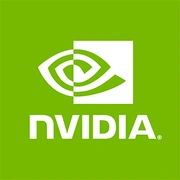NVIDIA GeForce MX450 30.5W 10Gbps

NVIDIA GeForce MX450 30.5W 10Gbps: A Compact Graphics Card for Basic Tasks and Light Gaming
Current as of April 2025
Introduction
The NVIDIA GeForce MX450 30.5W 10Gbps is a mobile graphics card designed for thin laptops and devices with limited thermal budgets. Although by 2025 it is no longer considered cutting-edge, it can still be found in budget models and ultrabooks. This article will explore who this model is suitable for, the performance it provides, and what compromises users may need to consider.
Architecture and Key Features
Architecture: The MX450 is based on the Turing architecture, which was introduced by NVIDIA in 2018. This means that the card does not support hardware-accelerated ray tracing (RTX) or DLSS technology, which emerged in later generations (Ampere, Ada Lovelace).
Process Technology: 12 nm (Samsung). As of 2025, this is considered outdated, as modern GPUs utilize 5–7 nm processes.
Unique Features:
- NVENC: Hardware video encoding for streaming and editing.
- Optimus: Dynamic switching between integrated and discrete graphics to save energy.
- Support for DirectX 12, Vulkan, and OpenGL 4.6.
What’s Missing:
- RT Cores and Tensor Cores — No ray tracing or DLSS available.
- AMD’s FidelityFX Super Resolution (FSR) works, but less effectively than on RDNA cards.
Memory: Modest Specifications for Basic Tasks
Type and Size: GDDR6 with 2 GB (4 GB is rarer in top versions). For 2025 gaming, this is insufficient—high-quality textures may not fit in the buffer even at Full HD.
Bandwidth:
- Memory bus: 64 bits.
- Speed: 10 Gbps per channel.
- Total: 80 GB/s (for comparison, the RTX 3050 Mobile offers 192 GB/s).
Impact on Performance:
- In gaming: Frequent FPS drops due to a lack of VRAM.
- In professional applications: Limited handling of large projects in Premiere Pro or Blender.
Gaming Performance: Only for Light Projects
Average FPS in Popular Games (Low/Medium Settings, 1080p):
- Counter-Strike 2: 90–110 FPS.
- Fortnite (without Ray Tracing): 45–55 FPS.
- Apex Legends: 50–60 FPS.
- Cyberpunk 2077 (FSR Performance): 25–30 FPS.
Resolution Support:
- 1080p: The primary mode for comfortable gaming.
- 1440p and 4K: Only for less demanding indie games (e.g., Stardew Valley).
Ray Tracing: Unavailable due to lack of RT Cores.
Professional Tasks: Minimum for Beginners
Video Editing:
- In Adobe Premiere Pro, rendering 1080p video takes 30–40% less time than on integrated graphics.
- NVENC support speeds up H.264/H.265 exports.
3D Modeling:
- In Blender, simple scenes are rendered via CUDA, but complex projects with textures >2 GB will encounter issues.
Scientific Computing:
- CUDA and OpenCL support allows MX450 to be used in basic machine learning, but the speed is lower than specialized GPUs.
Power Consumption and Heat Dissipation
TDP: 30.5 Watts — allows the card to be installed in ultrabooks with passive or compact active cooling.
Case Recommendations:
- Laptops with at least one fan and copper heat pipes.
- Avoid models with completely passive cooling — throttling under load is possible.
Comparison with Competitors
AMD Radeon RX 6400 Mobile:
- Pros: 4 GB GDDR6, support for FSR 3.0.
- Cons: Higher power consumption (35 W).
- Price: $250–300 (similar to MX450).
Intel Arc A350M:
- Pros: Better support for new APIs, XeSS.
- Cons: Driver issues in older games.
Conclusion: The MX450 wins in energy efficiency but loses in performance and memory size.
Practical Tips
Power Supply: A standard 65–90 Watt adapter is sufficient for a laptop with MX450.
Compatibility:
- Optimal processors: Intel Core i5/i7 12–13th generation, AMD Ryzen 5 7000.
- Be sure to update drivers through GeForce Experience — this will improve stability in new games.
Drivers:
- Avoid "experimental" builds — MX450 receives only critical updates.
Pros and Cons
Pros:
- Low power consumption.
- Suitable for thin laptops.
- Accelerates video editing and simple 3D tasks.
Cons:
- Only 2 GB VRAM.
- No support for DLSS and ray tracing.
- Weak performance in modern AAA games.
Final Conclusion: Who is the MX450 Suitable For?
This graphics card is a choice for those who:
1. Are looking for an affordable laptop ($500–700) for work and study.
2. Play older or less demanding games (CS2, Dota 2, indie projects).
3. Need basic graphics acceleration for editing or 3D modeling.
By 2025, the MX450 is no longer relevant for gamers or professionals but remains one of the most accessible discrete GPUs in the budget segment. If your tasks are more demanding, consider the RTX 2050 Mobile or Intel Arc A370M.
Prices are current as of April 2025. They reflect new devices in retail chains in the USA.
Basic
Memory Specifications
Theoretical Performance
Miscellaneous
Benchmarks
Compared to Other GPU
Share in social media
Or Link To Us
<a href="https://cputronic.com/gpu/nvidia-geforce-mx450-30-5w-10gbps" target="_blank">NVIDIA GeForce MX450 30.5W 10Gbps</a>